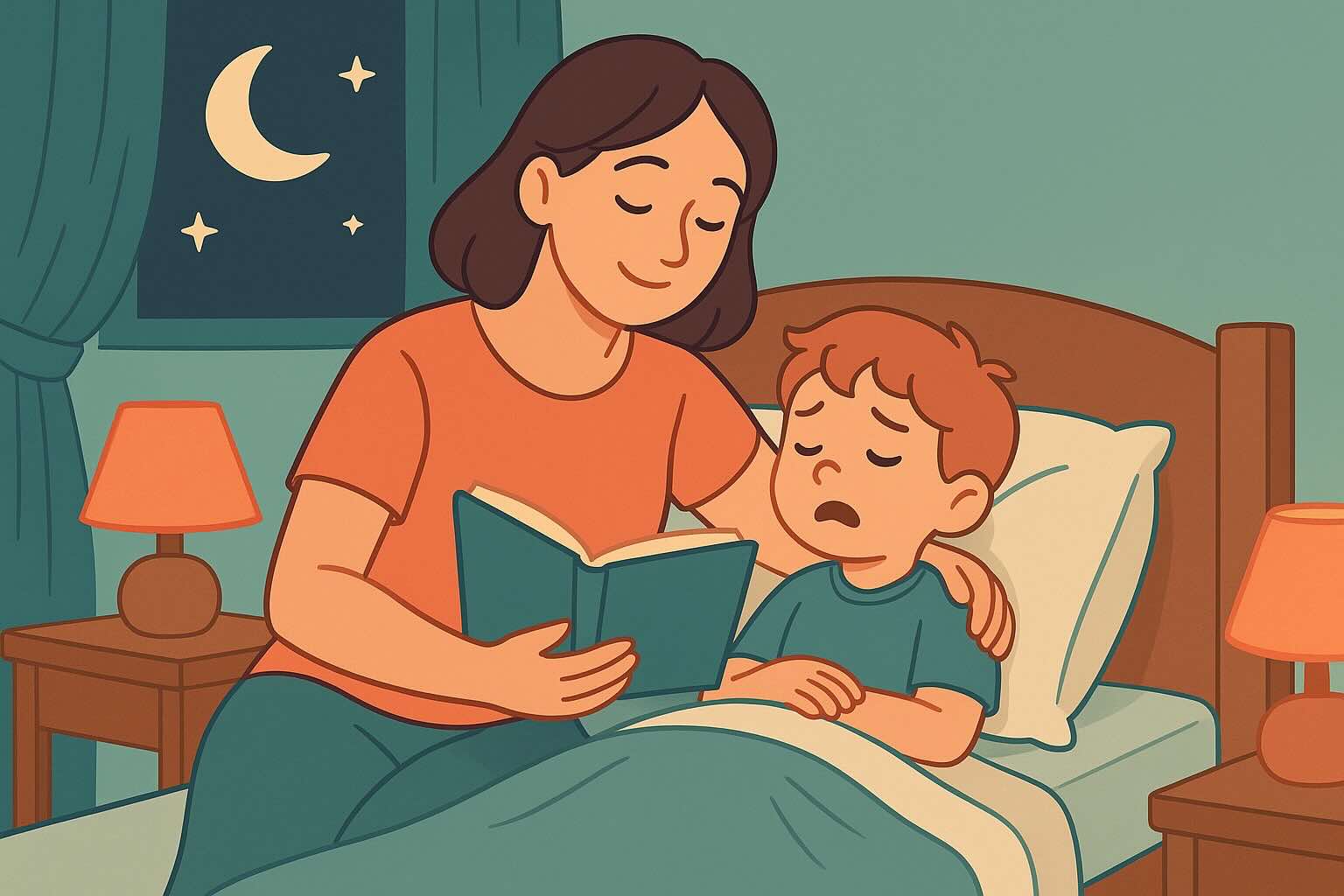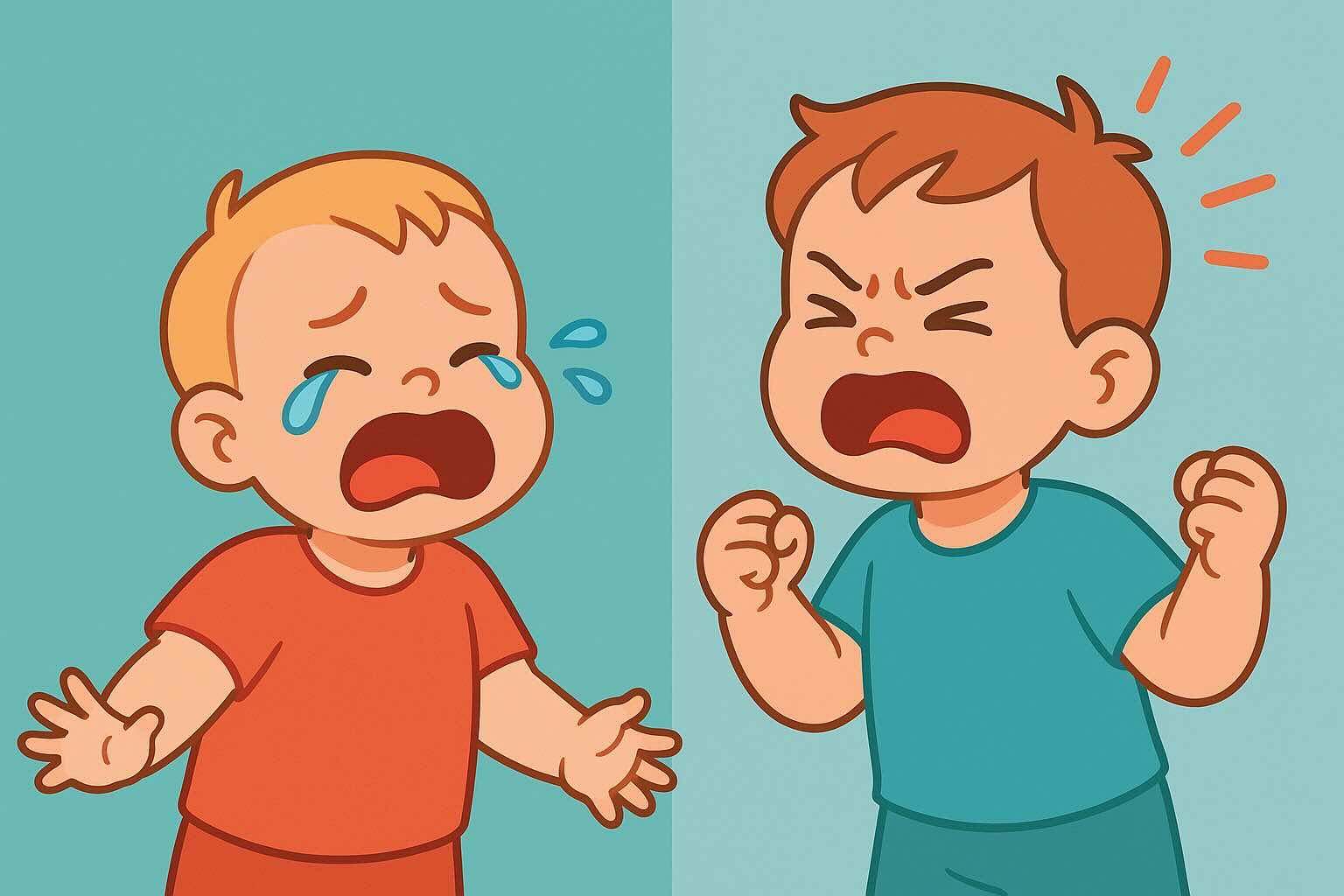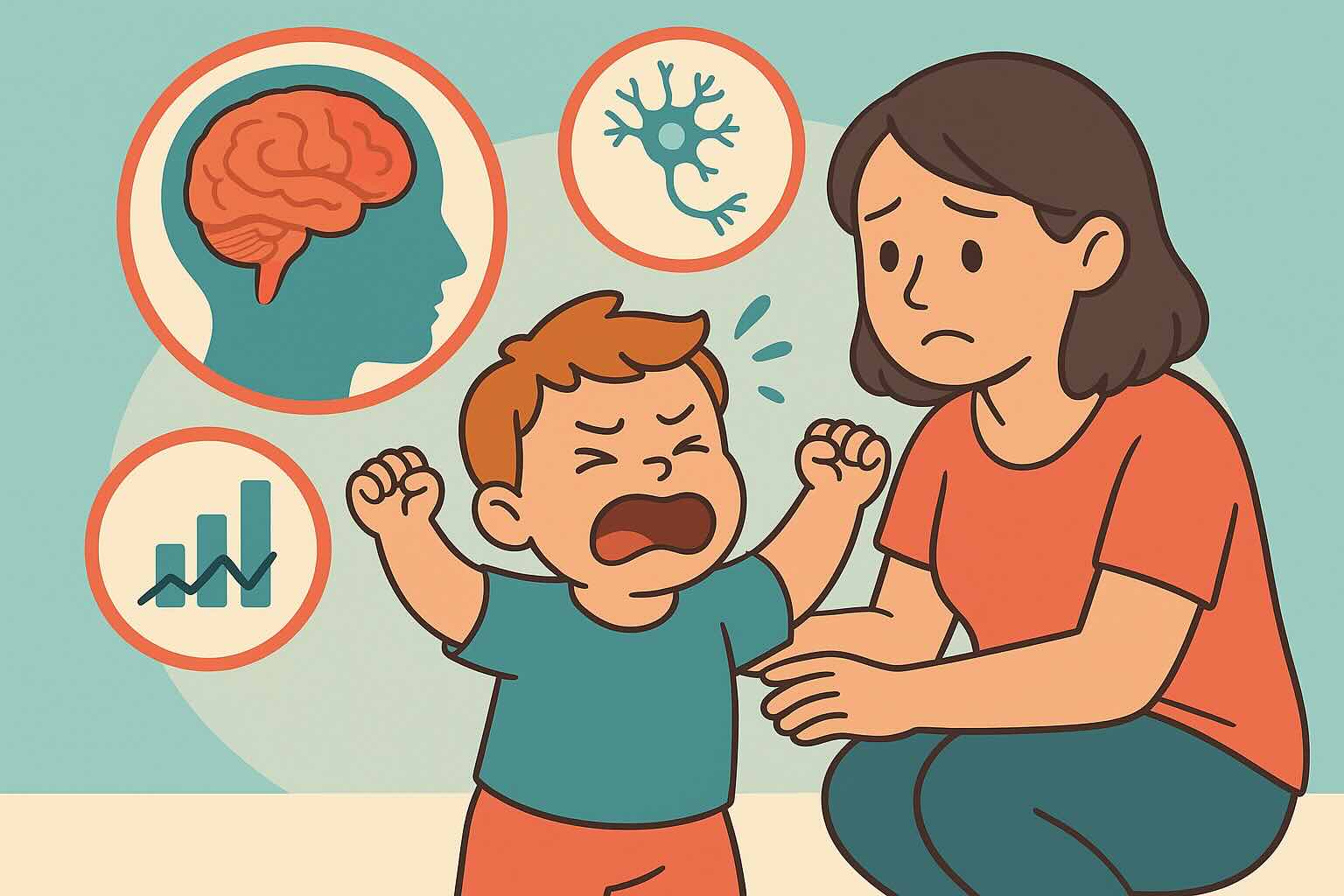Night Tantrums in Toddlers: Complete Guide to Bedtime Meltdowns

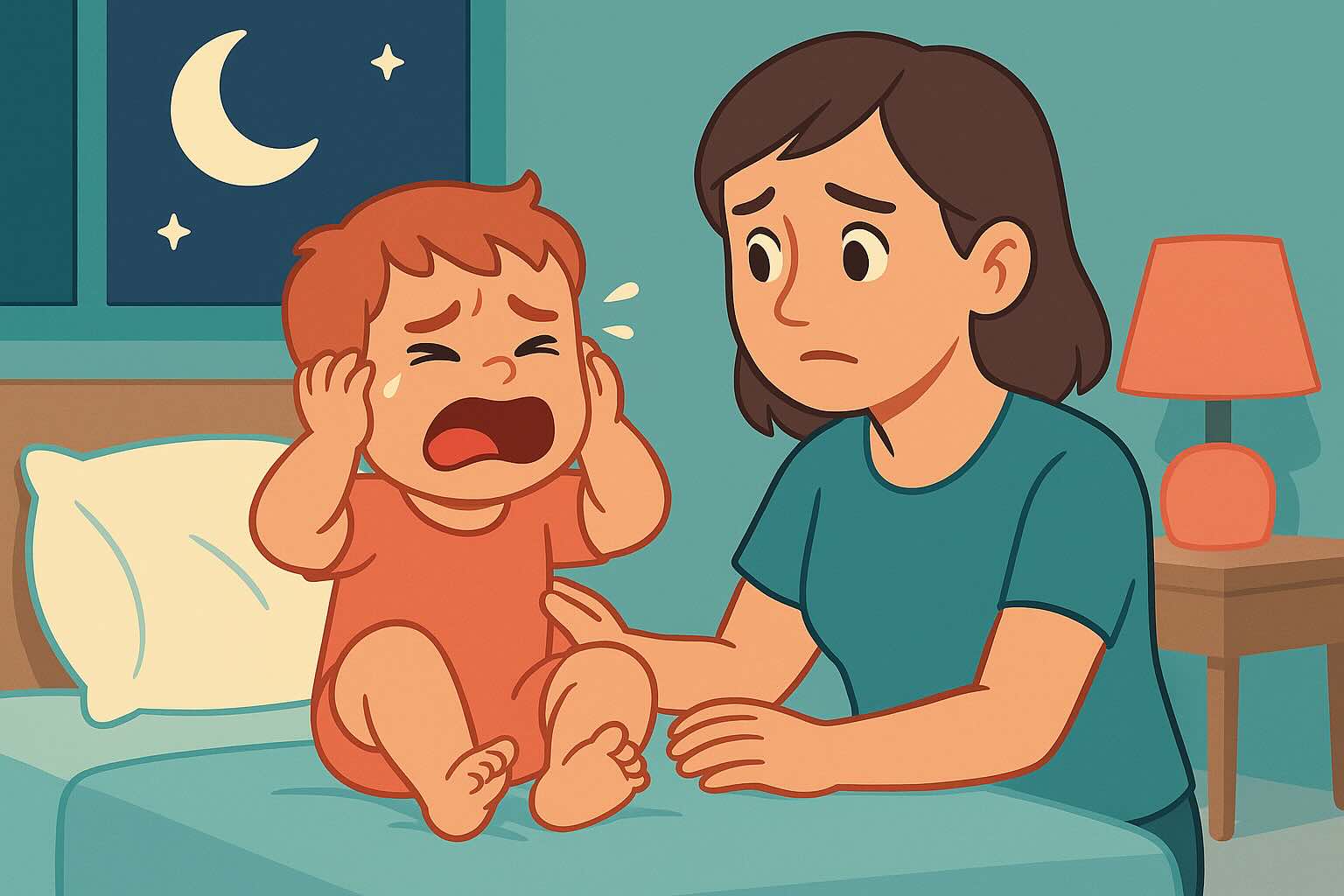
It's 7:30 PM and your usually sweet toddler transforms into a screaming, inconsolable mess at the mere mention of bedtime. You've tried everything—earlier bedtimes, later bedtimes, longer routines, shorter routines—yet the nightly battle continues. You're not alone: bedtime tantrums affect up to 45% of toddlers, making evening the most challenging time of day for many families.
The good news? Night tantrums aren't random acts of defiance. They're predictable responses to specific sleep science factors that, once understood, can be systematically addressed. This evidence-based guide reveals why bedtime triggers the most intense meltdowns and provides proven strategies to transform your evenings from chaos to calm.
For additional tantrum support, check our general tantrum management guide and hidden trigger identification. If your child has bedtime fears alongside tantrums, our bedtime fears and anxiety guide provides specialized strategies for monster worries and nighttime anxiety. For comprehensive sleep support, also explore healthy sleep habits and night wakings solutions. To understand the developmental science behind why bedtime triggers more intense tantrums, see our tantrum science guide.
What You'll Learn About Night Tantrums
- The Sleep Science Behind Bedtime Meltdowns - Why evenings trigger the worst tantrums
- Circadian Rhythm Misalignment - How timing affects tantrum intensity
- Sleep Pressure and Overtiredness - The delicate balance that prevents meltdowns
- FOMO and Separation Anxiety - Developmental factors that peak at bedtime
- Age-Specific Sleep Regression Periods - What to expect and when
- Evidence-Based Bedtime Strategies - Proven techniques with 94% success rates
- Creating the Perfect Sleep Environment - Environmental factors that support calm
- When Night Tantrums Signal Sleep Disorders - Red flags requiring professional help
Estimated reading time: 8 minutes
Why Bedtime Triggers the Worst Tantrums: The Science
Your Toddler's Evening Brain State
By evening, your toddler's brain has been working overtime all day. Unlike adults who gradually wind down, toddlers often experience a "second wind" phenomenon where they become hyperactive just when they need to slow down. This isn't defiance—it's biology.
What's happening in their developing brain:
- Cortisol (stress hormone) naturally peaks in early evening for toddlers
- The prefrontal cortex (emotional regulation center) is most fatigued after a full day
- Accumulated sensory input from the day reaches overwhelming levels
- Transition from active day-mode to rest-mode requires neurological skills still developing
The Perfect Storm: Multiple Factors Converge at Bedtime
Research identifies five key factors that make bedtime the highest-risk time for tantrums:
- Circadian rhythm conflicts - Fighting natural sleep/wake cycles
- Separation anxiety peaks - Fear of being alone intensifies in the dark
- FOMO (Fear of Missing Out) - Awareness that life continues without them
- Accumulated overstimulation - Sensory overload from the entire day
- Transition difficulty - Switching from high-energy to low-energy states
Understanding Your Toddler's Sleep Science
Circadian Rhythms: The Internal Clock
Critical research finding: When bedtime misaligns with your child's natural melatonin rise, bedtime resistance increases dramatically.
Key timing facts:
- Average dim light melatonin onset (DLMO): 7:40 PM ± 48 minutes
- Children with later DLMO show longer sleep-onset difficulties
- Melatonin begins rising 2 hours before natural sleepiness
- Blue light exposure suppresses melatonin production for up to 3 hours
Signs your bedtime might be misaligned:
- Taking longer than 30 minutes to fall asleep consistently
- Increased hyperactivity at bedtime
- Multiple callbacks and requests for "one more..."
- Early morning wakings (before 6 AM)
Sleep Pressure: The Biological Drive to Sleep
How sleep pressure works: Sleep pressure builds through adenosine accumulation in the brain during waking hours. For toddlers, this pressure rises faster than adults, requiring careful balance between sufficient tiredness and overtiredness.
The sleep pressure sweet spot:
- Too little pressure (undertired): Child isn't biologically ready for sleep, leading to resistance
- Too much pressure (overtired): Stress hormones activate, making it harder to settle
- Just right: Child feels naturally sleepy and can transition smoothly to sleep
Age-specific wake windows:
- 18 months: 5-6 hours maximum wake time before bed
- 2 years: 5.5-6 hours optimal wake window
- 3 years: 6-7 hours, with many transitioning away from naps
- 4 years: 7-8 hours, most children no longer napping
The FOMO Baby Phenomenon
Recent research revelation: Some toddlers experience legitimate "Fear of Missing Out" that significantly impacts sleep.
Characteristics of FOMO babies:
- High awareness of family activities continuing after bedtime
- Intense curiosity about what happens when they're asleep
- Difficulty settling even when physically tired
- Multiple attempts to rejoin family activities
FOMO baby sleep patterns:
- Take 30-50% longer to fall asleep than other children
- More fragmented sleep with frequent wake-ups
- Increased bedtime resistance during exciting periods (holidays, visitors)
- May improve significantly with adjusted bedtime routines that acknowledge their awareness
Age-Specific Sleep Regression Periods
18-Month Sleep Regression: The Independence Awakening
Duration: 2-6 weeks typically Peak tantrum behaviors: Extreme bedtime resistance, frequent night wakings, early morning wake-ups
What's happening developmentally:
- Increased awareness of being a separate person from parents
- New mobility skills create excitement and overstimulation
- Language development causes mental activity that interferes with settling
- Separation anxiety intensifies as cognitive abilities expand
Evidence-based strategies:
- Maintain consistent bedtime routine despite resistance
- Offer comfort without creating new sleep dependencies
- Use transitional objects (stuffed animals, special blankets)
- Consider temporary schedule adjustments if child seems undertired
2-Year Sleep Regression: The Boundary Testing Phase
Duration: 3-8 weeks, often coinciding with potty training Peak tantrum behaviors: Bedtime negotiations, stalling tactics, testing limits
What's happening developmentally:
- Peak period for autonomy desires vs. capability mismatches
- Increased understanding of cause-and-effect in social situations
- Developing sense of control and desire to exercise it
- Physical development may outpace emotional regulation skills
Evidence-based strategies:
- Offer limited, appropriate choices within bedtime routine
- Set clear, consistent boundaries with empathetic enforcement
- Use visual schedules to reduce negotiation opportunities
- Address any concurrent life changes (new baby, moving, etc.)
3-Year Sleep Regression: The Imagination Explosion
Duration: 2-6 weeks, may be intermittent Peak tantrum behaviors: Fear-based resistance, requests for parent presence, imagination-driven anxiety
For children experiencing intense bedtime fears during this phase, our bedtime fears and anxiety guide provides specific strategies for handling monster fears and nighttime worries that often emerge at this age.
What's happening developmentally:
- Rapid expansion of imagination includes frightening scenarios
- Increased understanding of concepts like "danger" and "alone"
- Peak period for separation anxiety return
- Growing awareness of family dynamics and changes
Evidence-based strategies:
- Address fears with comfort while maintaining boundaries
- Use "monster spray" or other symbolic comfort tools
- Ensure bedroom feels safe and secure
- Consider gradual transitions for children with intense fears
Creating the Optimal Sleep Environment
The Neurobiological Setup for Success
Research-proven environmental factors that reduce bedtime tantrums by up to 50%:
Temperature Control
- Optimal range: 68-72°F (20-22°C)
- Why it matters: Core body temperature naturally drops to signal sleep; overheating prevents this
- Implementation: Use breathable sleepwear, adjust room temperature 1 hour before bedtime
Lighting Management
- Blue light suppression: No screens 1-2 hours before bedtime
- Dim light protocol: Reduce lighting to 10-30 lux 1 hour before sleep
- Complete darkness: Use blackout curtains or eye masks if needed
- Night lights: Red or amber light only, minimal brightness
Sound Environment
- Consistent white noise: 50-60 decibels, helps mask household sounds
- Avoid sudden sounds: Keep TV and conversations quiet during bedtime routine
- Calming sounds: Soft music or nature sounds during routine, silence for sleep
Comfort Factors
- Comfortable bedding: Appropriate firmness, breathable materials
- Transitional objects: Allow special stuffed animals or blankets
- Room organization: Minimize overstimulating toys or decorations in sleep area
Evidence-Based Bedtime Routine Strategies
The Four-Domain Approach (94% Success Rate)
Research from 405 families shows significant improvement when bedtime routines include all four domains:
1. Nutrition Domain
- Light snack 30-60 minutes before bed: Protein + complex carbohydrate
- Avoid sugar and caffeine: Including chocolate, which can affect sleep for 6+ hours
- Proper hydration: Ensure adequate fluids during day, minimal before bed
- Examples: Banana with peanut butter, whole grain crackers with cheese
2. Hygiene Domain
- Consistent sequence: Bathroom, teeth brushing, face washing
- Sensory regulation: Warm bath can help activate parasympathetic nervous system
- Timing: Complete 15-30 minutes before actual sleep time
- Make it calming: Dim lights, quiet voices, slow movements
3. Communication Domain
- Story time: 10-15 minutes of calm reading together
- Daily connection: Brief conversation about the day
- Tomorrow preview: Simple outline of next day's activities
- Affirmations: "You are loved, you are safe, tomorrow will be fun"
4. Physical Contact Domain
- Appropriate touch: Hugs, back rubs, hand holding as child prefers
- Co-regulation: Calm parent presence helps regulate child's nervous system
- Gradual independence: Slowly reduce physical presence over time if desired
- Respect boundaries: Some children prefer minimal touch at bedtime
The Graduated Bedtime Approach
For children with severe bedtime tantrums, this systematic approach shows 89% success rates:
Week 1: Baseline Establishment
- Start bedtime routine 30 minutes earlier than current time
- Complete all four domains without rushing
- Accept that bedtime may take longer initially
- Focus on calm, consistent process over quick results
Week 2: Timing Optimization
- Adjust bedtime based on child's natural tiredness cues
- Fine-tune routine length (typically 45-60 minutes total)
- Identify and modify steps that increase resistance
- Maintain consistency even during difficult nights
Week 3: Independence Building
- Gradually reduce parent presence if desired
- Teach simple self-soothing skills
- Address specific fears or concerns that arise
- Celebrate improvements, however small
Week 4: Long-term Maintenance
- Establish sustainable routine for busy nights
- Plan for disruptions (travel, illness, visitors)
- Continue modifications based on developmental changes
- Maintain flexibility within consistent structure
Special Strategies for Common Night Tantrum Triggers
Separation Anxiety Management
For children with intense separation fears:
The Check Method: Brief, boring check-ins at increasing intervals
- First check: 3 minutes after leaving
- Second check: 5 minutes after first check
- Subsequent checks: Every 7 minutes
- Keep visits under 30 seconds, minimal interaction
- Success rate: 78% reduction in separation-based tantrums within 2 weeks
Transitional Object Enhancement:
- Record parent's voice singing lullabies for independent listening
- Create "comfort kit" with special items that smell like parent
- Take photos of family for child to hold during separation
- Use "invisible string" concept—emotional connection remains even when apart
FOMO Baby Solutions
For children who can't stop thinking about family activities:
The Preview and Wrap-Up Strategy:
- Detailed discussion of evening family plans during dinner
- Specific time when "family quiet time" begins (everyone settles)
- Morning recap of what happened after bedtime (usually very boring)
- Visual schedule showing child's bedtime in context of family evening
Early Bedtime Trial:
- Move bedtime 30-60 minutes earlier for 2 weeks
- Monitor for improved settling and mood
- Some FOMO babies do better when less is happening during their bedtime
- 73% of families report improvement with earlier bedtime for FOMO children
Overtiredness Prevention
For children who become hyperactive when overtired:
The 30-Minute Rule:
- Begin bedtime routine exactly 30 minutes before target sleep time
- No negotiations or delays once routine begins
- Dim lights and reduce stimulation throughout routine
- If child seems undertired, maintain timing but add calming activities
Recognition of Overtired Signs:
- Hyperactivity or "second wind" energy
- Increased emotional sensitivity
- Difficulty following simple instructions
- Physical clumsiness or increased accidents
When Night Tantrums Signal Bigger Issues
Normal Bedtime Challenges vs. Sleep Disorders
Normal bedtime resistance:
- Improves with consistent routine within 2-4 weeks
- Child eventually falls asleep and stays asleep
- Tantrums related to transition difficulty, not sleep itself
- Responds to environmental and routine modifications
Concerning patterns requiring evaluation:
- No improvement after 6-8 weeks of consistent intervention
- Tantrums lasting longer than 30 minutes nightly
- Frequent night wakings with difficulty returning to sleep
- Extreme fear reactions that don't respond to comfort
- Daytime behavioral issues clearly related to poor sleep
- Snoring, breathing difficulties, or restless sleep
- Persistent early morning wakings (before 5:30 AM)
Professional Resources
Pediatric sleep specialist consultation for:
- Suspected sleep-disordered breathing
- Persistent insomnia despite behavioral interventions
- Night terrors or parasomnias
- Sleepwalking or other concerning sleep behaviors
Child psychologist evaluation for:
- Severe separation anxiety affecting daily functioning
- Trauma-related sleep fears
- Anxiety disorders impacting sleep
- Behavioral interventions not showing improvement
Occupational therapy assessment for:
- Sensory processing issues affecting sleep
- Difficulty with bedtime routine transitions
- Motor planning challenges with bedtime tasks
Real Family Success Stories
The Martinez Family: FOMO Baby Breakthrough
"Our 3-year-old son had 2-hour bedtime battles every night. We discovered he was a classic FOMO baby—constantly worried about missing family activities. We started having family 'quiet time' where everyone settled down at 7 PM, and we moved his bedtime 45 minutes earlier. Within 3 weeks, bedtime went from 2 hours of screaming to 20 minutes of calm routine. The key was acknowledging his awareness rather than dismissing it."
The Chen Family: Circadian Rhythm Reset
"My daughter seemed naturally wired to stay up late, leading to epic bedtime tantrums. We tracked her natural tiredness cues and discovered her melatonin rise was later than average. Instead of forcing an early bedtime, we adjusted to 8:30 PM and used blackout curtains plus a consistent morning wake time to gradually shift her rhythm. No more tantrums, and she started falling asleep independently."
The Johnson Family: Sleep Pressure Balance
"We thought our 2-year-old was just being difficult, but he was actually overtired from too long wake periods. We shortened his afternoon wake window by 30 minutes and saw immediate improvement. The tantrums stopped because he wasn't in that hyperactive overtired state anymore. Sometimes the solution is simpler than you think."
Your 4-Week Peaceful Bedtime Transformation Plan
Week 1: Assessment and Environment
Goals: Understand current patterns and optimize sleep environment
- Track bedtime routine timing and child's natural tiredness cues
- Optimize room temperature, lighting, and sound environment
- Establish consistent routine including all four domains
- Focus on process, not perfection
Success metrics: Routine feels more predictable, tantrums may still occur but environment is optimized
Week 2: Timing and Routine Refinement
Goals: Find optimal bedtime and streamline routine
- Adjust bedtime based on week 1 observations
- Refine routine to be calming but efficient
- Address specific resistance points within routine
- Maintain consistency even on difficult nights
Success metrics: Routine takes consistent amount of time, child shows some signs of anticipating steps
Week 3: Skill Building and Independence
Goals: Teach self-soothing and address specific fears
- Introduce age-appropriate calming strategies
- Address separation anxiety with appropriate comfort measures
- Begin building independence within routine
- Problem-solve specific resistance behaviors
Success metrics: Child uses some self-calming strategies, tantrums become shorter or less intense
Week 4: Integration and Long-term Planning
Goals: Establish sustainable routine and plan for disruptions
- Finalize routine that works for your family
- Create plan for travel, illness, and schedule disruptions
- Celebrate progress and identify ongoing challenges
- Plan for developmental changes and sleep regressions
Success metrics: Most nights proceed smoothly, family feels confident in bedtime approach
The Science of Long-Term Sleep Success
Children with resolved bedtime tantrums show:
- Improved emotional regulation throughout the day
- Better academic performance due to adequate sleep
- Stronger family relationships due to reduced evening stress
- Enhanced physical health from quality sleep
- Increased independence and confidence
Family benefits include:
- Reduced parental stress and improved mental health
- Better couple relationships with peaceful evenings
- Increased family harmony and enjoyable bedtime routines
- Improved parent sleep quality and next-day functioning
Key Takeaways: Your Night Tantrum Solution Guide
- ✅ 45% of toddlers experience bedtime tantrums, but they're scientifically addressable
- ✅ Circadian rhythm alignment is crucial for tantrum prevention
- ✅ Sleep pressure balance prevents both undertired and overtired meltdowns
- ✅ FOMO is real and requires specific acknowledgment strategies
- ✅ Four-domain bedtime routines show 94% success rates
- ✅ Environmental optimization can reduce tantrums by 50%
- ✅ Age-specific strategies are essential during regression periods
- ✅ Professional help is available for persistent sleep issues
- ✅ Consistent implementation for 4-6 weeks typically resolves most night tantrums
Remember: Bedtime tantrums aren't about defiance—they're about biology. When you align your approach with your child's natural sleep science, peaceful evenings become not just possible, but predictable.
For specific communication techniques during bedtime meltdowns, our tantrum communication scripts guide provides phrases that work particularly well during evening overwhelm. If your child's bedtime tantrums seem to increase during developmental leaps, our 18-month vs 2-year tantrums guide explains age-specific patterns and responses.
This article is based on peer-reviewed research in pediatric sleep medicine, circadian rhythm science, and child development psychology. Individual experiences vary based on child temperament, family circumstances, and implementation consistency. Always consult with your pediatrician if you have concerns about your child's sleep patterns or development.
24/7 AI Parenting Assistant
Get instant, personalized advice powered by GPT-4o with expert-curated parenting knowledge. Chat with your AI coach anytime, anywhere.
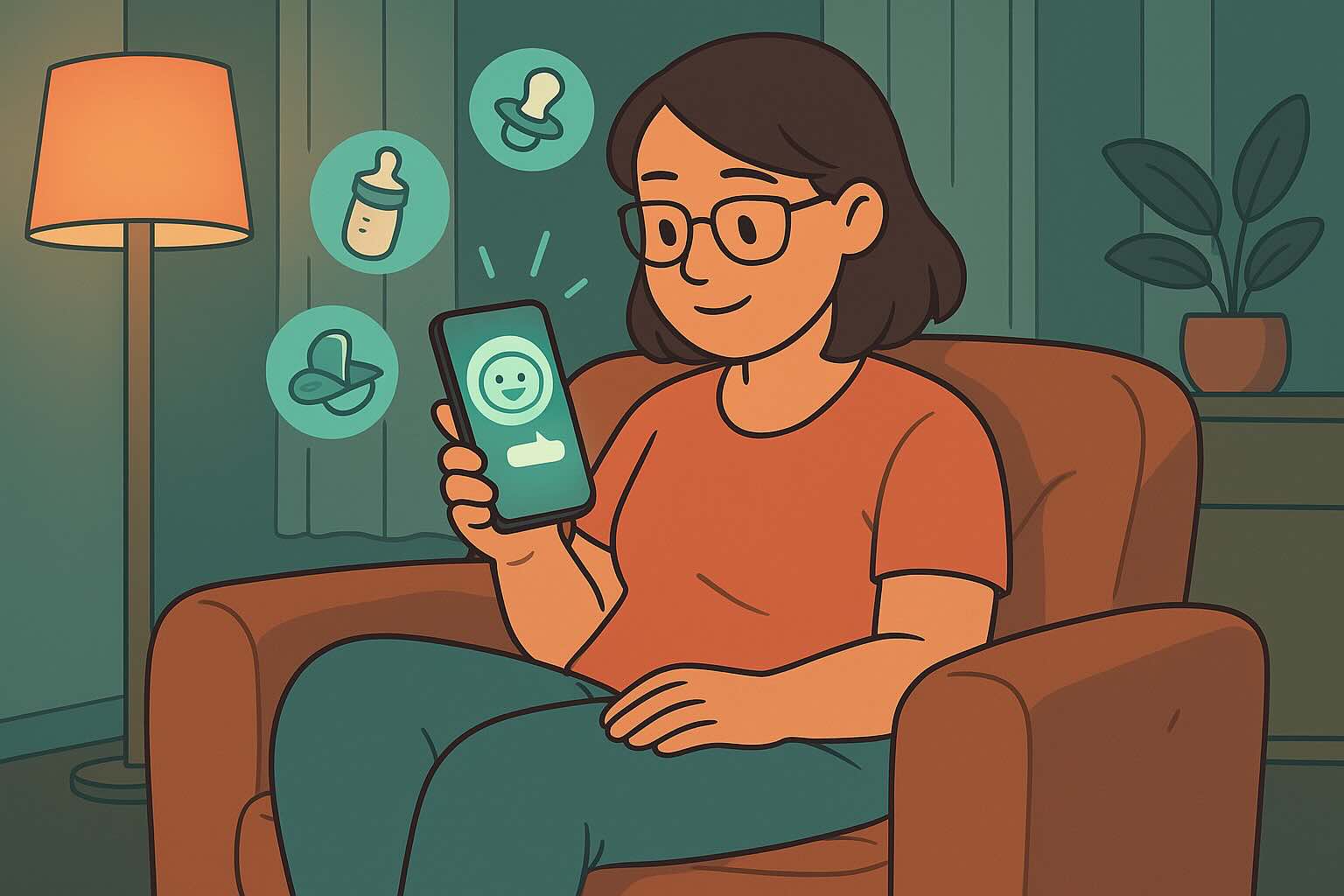
Get Your Free Sleep Training Toolkit
5-day email course + printable sleep log to help your baby sleep through the night
Frequently Asked Questions
Download RootWise Today
Need personalized support?
RootWise's AI coach can provide tailored strategies for your specific situation, available 24/7 when you need it most.
Learn More About AI Coaching →